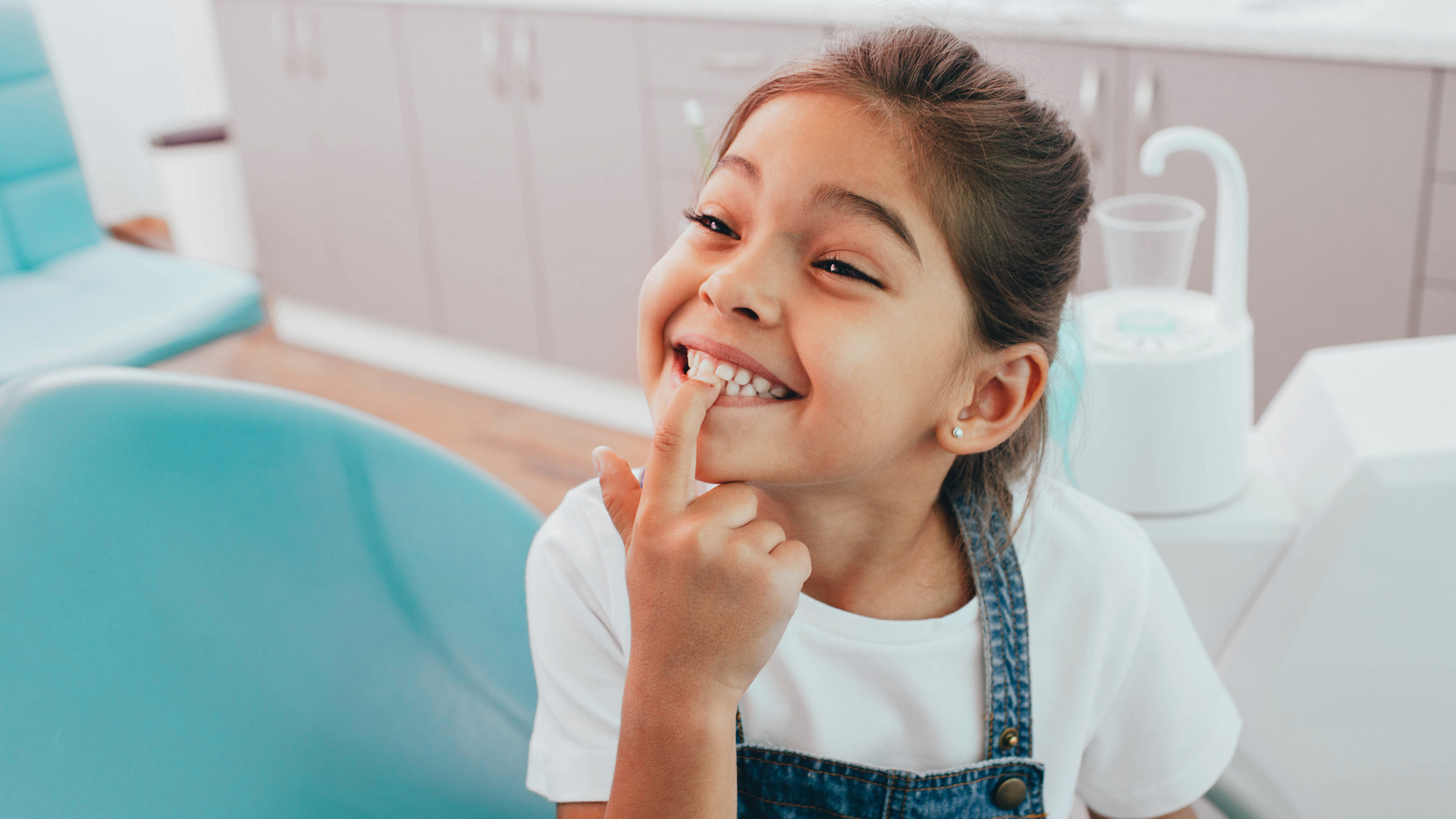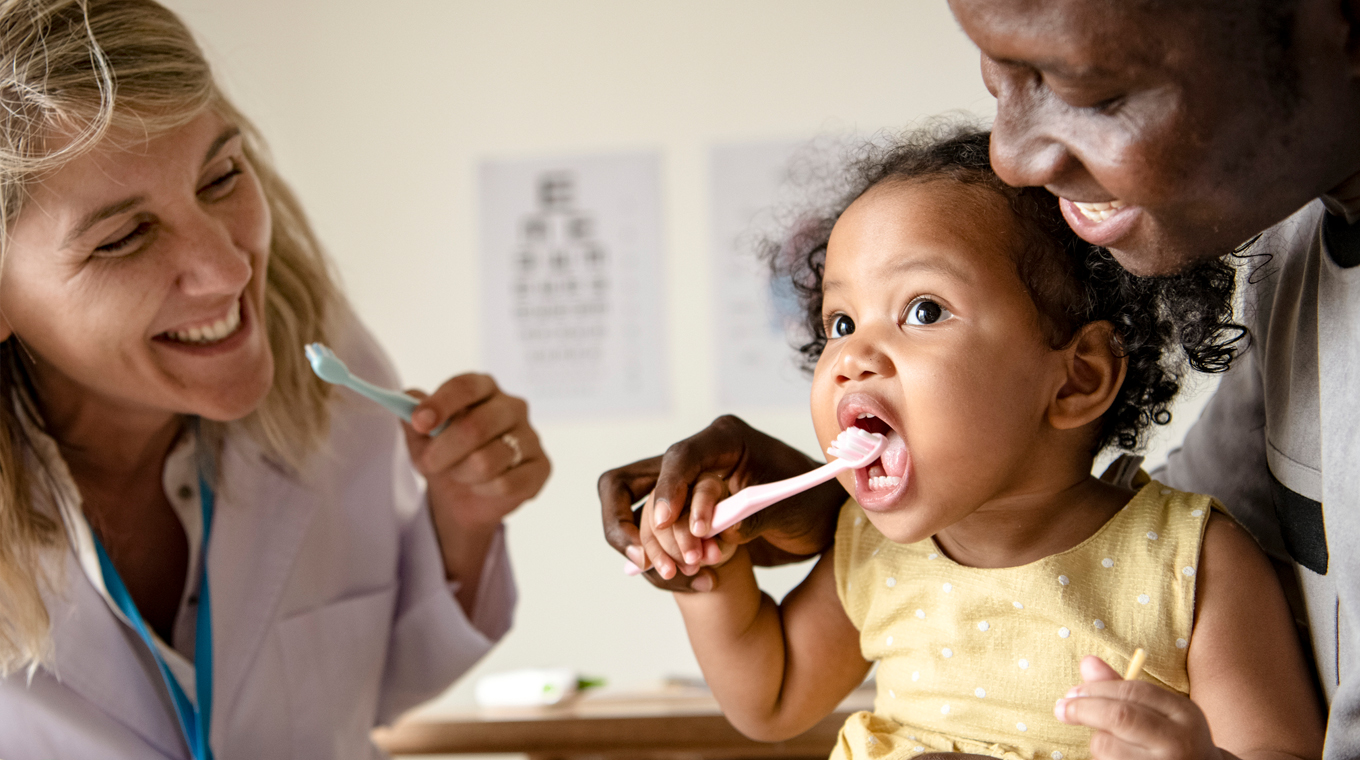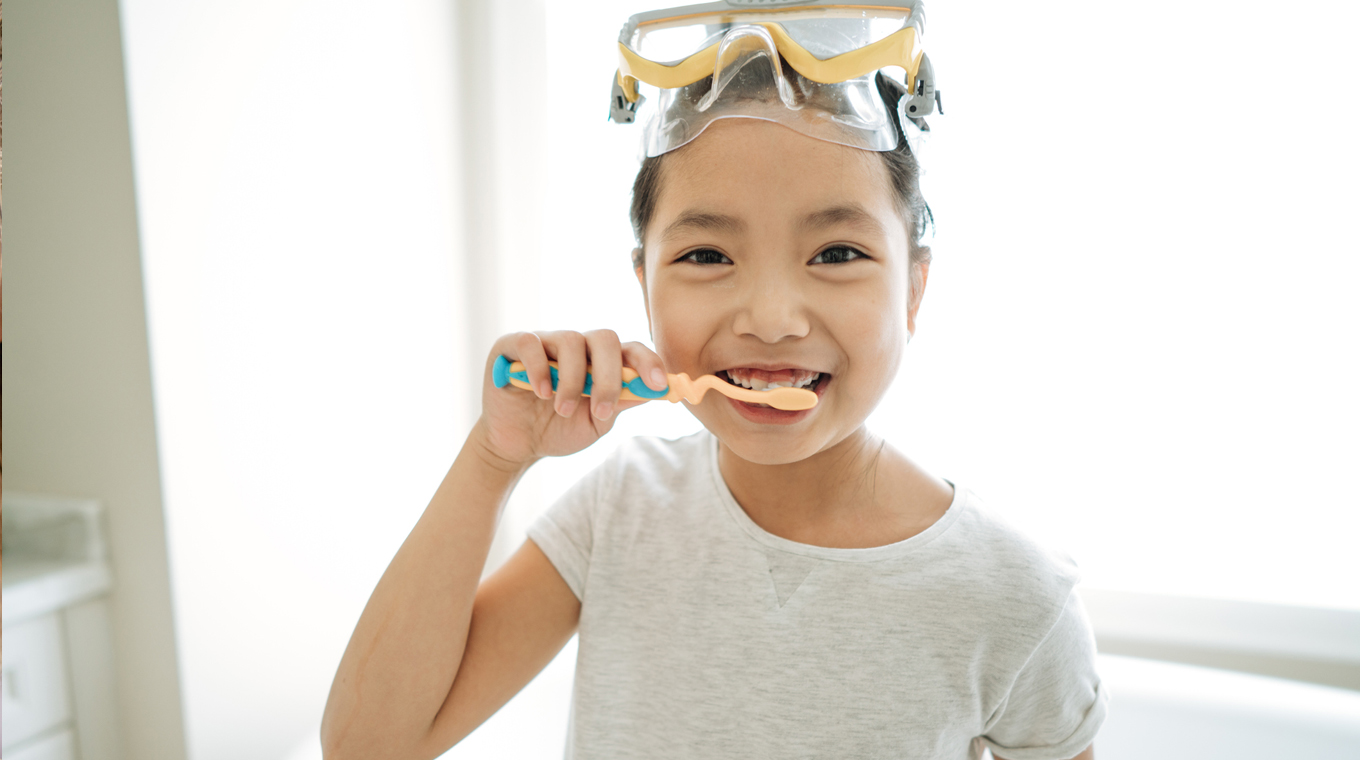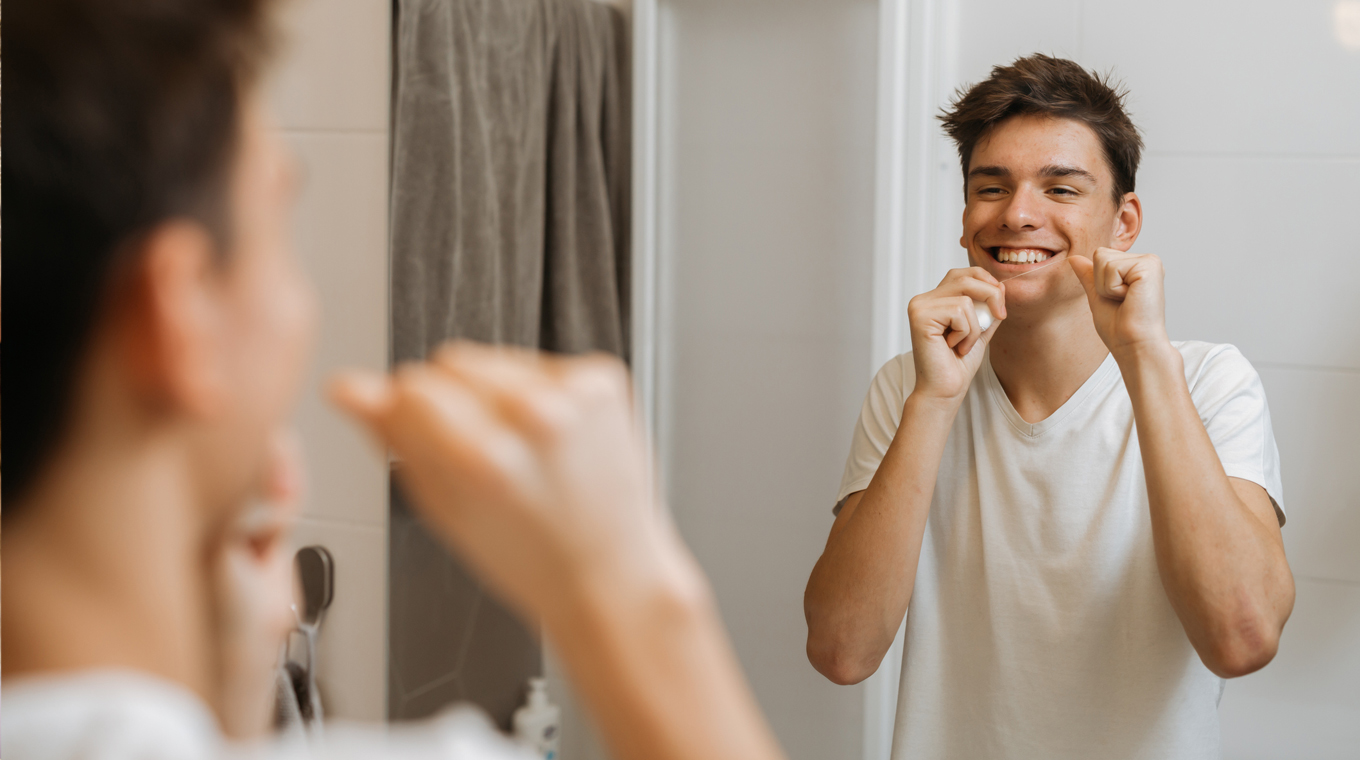

In this article:
As a mom, you take the wins when you can get them because on some days, well, basic stuff like brushing teeth before bed seems like a miracle. This was once the case in my household, but I say a prayer of thanks when the house is quieting for the evening and I hear my teenage son go into the bathroom to brush his pearly whites. It wasn’t always so easy getting him to brush his teeth. I doubt I’m alone when it comes to being concerned with dental health in children.
According to the Center for Disease Control and Prevention (CDC), children with cavities are more likely to miss school, get lower grades, and have problems with eating, speaking, and playing. Cavities, also called tooth decay or dental caries, are a prevalent and often untreated medical condition.
The great news is there is a lot you can do to not just prevent those cavities but also make brushing a habit for even the most forgetful of teens — and kids of all ages.
Start good dental habits early

Healthy baby teeth (up to two years)
Good dental hygiene begins when your baby is, well, just a baby. That’s right! There are things you can do to promote good oral health before your baby even sprouts that first tooth.
“The most important thing about brushing your child’s teeth is that the parent is directly involved and to start early and be consistent,” oral surgeon Justin Bonner, DDS told Mom.com. This includes using a soft washcloth or baby toothbrush with warm water to massage the gums. There are some dentist-recommended cleansers, but avoid using toothpaste unless given specific instructions from your dentist.
Of course, you can do a lot to prevent tooth decay with good eating habits that include limiting:
- Candy and sweets
- Soft drinks
- Jams
- Flavored milk or yogurt
- Sugary breakfast cereals
Once that first tooth pops up, it is time to take two minutes twice a day to brush. Use a soft-bristled toothbrush, ideally a child-sized toothbrush that fits comfortably in your child’s tiny mouth. Use a non-fluoridated toothpaste to prevent fluorosis, the faint white lines or streaks found on the teeth of children who consume too much fluoride.
Your pediatrician will be a good guide for when that first visit to the dentist should be, but generally, you want to schedule your first appointment before your baby turns one. If your child still hasn’t sprouted their first tooth by then (like my son), you will still get a lot of value about what to expect when those teeth pop up.
Remember that the best advice will do nothing if you aren’t actively involved in helping your child brush their teeth. Andrea Johnson Kirkman, who is the mom of a young daughter, makes it a game. “We tell our daughter that we brush and floss to get rid of sugar bugs,” she told Mom.com. “Bugs creep her out, so it works.”
Emphasizing dental hygine for kids

Healthy teeth from ages two through seven
As your child gets older, you want to encourage their good habits of tooth brushing. This means they should be brushing their teeth — at least the first go-round — to practice good habits. Moms and dads should wrap up the ritual by helping do a final round of brushing.
Some kids might not like this, but the reality is they don’t have the dexterity to do a good job yet. Making it a game using their favorite themed toothbrush can make the process easier. Toddler toothbrushes are more narrow and easier for your child to get to the back teeth. You can get a lot of mileage by brushing your own teeth while your child brushes theirs — they really do imitate what you do, so brush yours well and teach by example.
You’ll want to continue to re-brush and floss your child’s teeth through the age of seven. It’s at this age that children have the physical abilities to really brush properly. Until then, all their practice is helping them develop the right habits of brushing. Note: Talk to your dentist about the use of fluoride. Children should not use more than a pea-sized dab of toothpaste on their toothbrush
Keep in mind that as your child loses their baby teeth and starts to get their permanent teeth, you want to protect those from day one. This doesn’t happen the second the first permanent tooth comes in; it starts with the years of good oral hygiene, nutrition, and modeling that you do.
Cavities and tooth decay
When we don’t brush and floss properly, tooth decay can lead to an increase in bacteria in the mouth resulting in eventual rot. The signs of tooth decay include:
- Toothaches
- Hot or cold sensitivity
- White, brown, or black spots on the tooth
- Bad breath
- Bad taste in the mouth
- Swelling of gums or surrounding mouth tissue
Preventing tooth decay is the result of more than just bad hygiene. Sugar and carbohydrates cling to the teeth and can increase the chances of tooth decay.
Good dental habits for a lifetime

Healthy habits for older kids, teens — and beyond
From age eight on, you will likely start to take a back seat to help them brush. Your child’s hands now have the strength and dexterity to manage the job. They should be using fluoridated toothpaste by this age as well. It’s at this transition that you must make sure that good habits continue with a regular routine of brushing, double-checking how they did, and soliciting the help of your dentist if they still have issues with proper brushing or flossing techniques.
It’s amazing what weight a request from a well-respected pediatric dentist can do in the mind of a child. For all our early work, my son had his first cavity when he was in the first grade. Lucky for him, he was a late teether and it was still a baby tooth.
But our dentist did a great job to remind him what he needed to do every single day, even into his teen years. By taking the time to work with him, it made my life just a little easier and avoided some extra tears. (So did the idea of never having to hear another drill.)







